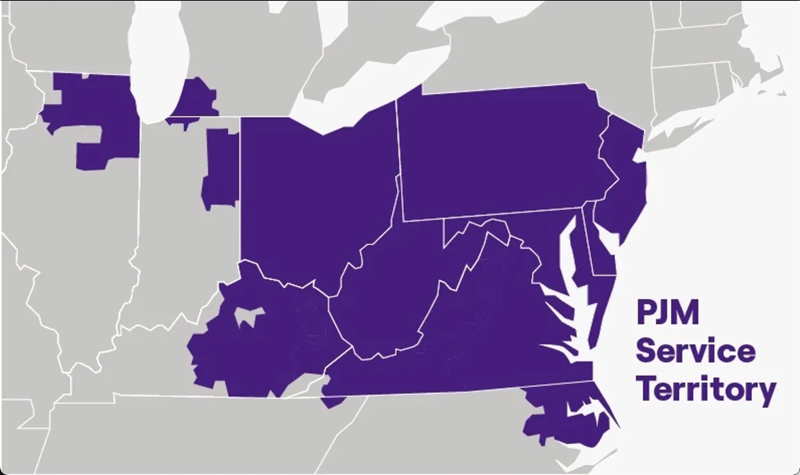From E&E News, July 10:
The deal aims to bring resources online faster and to speed up reviews for projects applying to come online.
PJM, the nation’s largest grid operator, is planning to use artificial intelligence to overhaul how it runs its electricity system across 13 states, with major implications for renewables, fossil fuels and an interconnection backlog stalling projects.
In an announcement Thursday, Google said it is teaming up with PJM and Tapestry, an arm of Alphabet focused on grid innovation, to use new AI technologies to change the way the grid operator plans projects and brings them online. The idea is essentially to do for the electricity system what Google maps and searches did for the internet to speed up and simplify the interconnection process.
This will be “the first time that artificial intelligence is being used to manage the entire interconnection queue and process,” said Page Crahan, general manager of Tapestry, on a call with reporters about the project.
Today, developers are “largely using the same tools that we designed for last century’s grid. We know that we can do better than this,” added Crahan, who said her team has been working for seven years on developing the AI tools.
Tapestry, which plans to build on existing AI technologies such as Google DeepMind, said the plan would speed up reviews for projects applying to link to the grid. That could be significant for PJM, which has thousands of projects waiting to connect, particularly renewables, across its territory. PJM said it would eventually use the new technology for all interconnection requests.
The plan comes as the grid operator is trying to figure out how to address a looming electricity shortage because of retirements of coal and gas plants and a surge in demand from AI and data centers.
PJM expects it could lose about 40 gigawatts, or 21 percent of its capacity, by 2030, said Aftab Khan, PJM’s executive vice president.
New power resources are not coming online “at an adequate enough pace … to replace the risk of retiring resources,” Khan said.
Nationally, the grid backlog is more than double the size of the existing installed power fleet, according to Lawrence Berkeley National Laboratory.
It’s unclear how the plan might ultimately affect the electricity mix, but speeding up interconnection requests could bring more solar, wind and batteries on the grid, since those resources dominate the current backlog. In a press release, Google said the AI tools could “support the rapid and reliable integration of diverse energy sources onto the grid.”
Crahan said the AI technologies would consolidate what currently is a “laborious” PJM process. Under the existing system, officials have to review many documents and computer models to approve and connect one project. Crahan compared it to retail shopping before the internet, when everyone was faxing orders.
As an example, she said planners currently use separate software for everything from assessing how equipment connects to the grid to economic analyses of projects.
“Each of these software programs will generate a file, which creates its own unique model of the grid. Every time a change is made to that one model, it needs to be applied to all the other models,” Crahan said. Because everything is siloed, it is “extremely difficult” to keep track of details and move projects along quickly, she said.
With the new tools, grid planners would be able to assess projects in one place. An online demonstration resembled a mix of Google Maps and Microsoft Windows, where a user could drag and drop large amounts of information around one screen. The AI technologies also would eliminate many time-consuming steps to review and connect projects, such as verifying that land rights are associated with a given applicant....
....MUCH MORE
From February's ""Nation's Largest Grid To Fast-Track NatGas Power Plants To Fuel Next AI Trade" (GEV)":

And more recently: